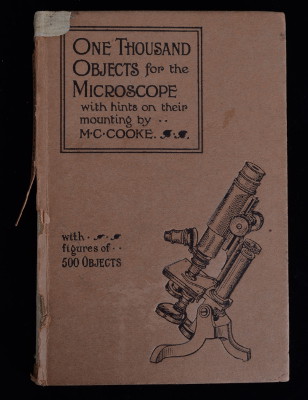One thousand objects for the microscope : with a few hints on mounting, by M.C. Cooke.
London ; New York : Frederick Warne and Co., [c.1869].
Popular Edition.
STORE TURNER 104
Mordecai Cubitt Cooke (1825-1914) was a teacher, naturalist and mycologist, who made it his aim to popularise microscopy and natural history. Cooke wrote 14 books for the general reader and illustrated many of these himself. This was one of his most successful books and was dedicated to the President and members of the Quekett Microscopical Club, of which Cooke was a founding member. As explained in the preface, the publishers asked Cooke to expand his earlier work into this ‘popular edition’ to make it even more suited to beginners, an indication of the influence held by publishers over the material produced for the reading public. It was published by Frederick Warne and Co. in several editions and under various series, including 'The country library & family circle books' and 'Warne's useful books'.
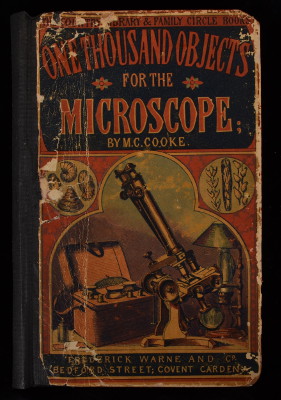
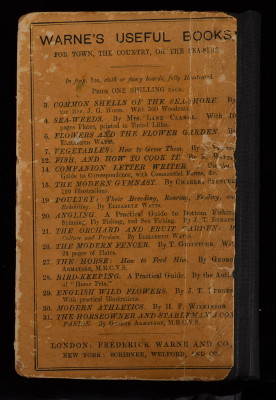
One thousand objects for the microscope : with a few hints on mounting, by M.C. Cooke.
London ; New York : Frederick Warne and Co., 1869.
STORE 40:25
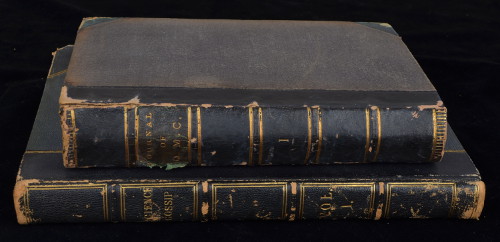
Cooke, along with the publisher Robert Hardwicke, also co-founded the very successful magazine Science-Gossip: an illustrated medium of interchange and gossip for students and lovers of nature in 1865. In the 1870s this was one of the major science periodicals produced for a popular audience and it claimed to be the cheapest, priced at just 4 pence. As the subtitle suggests, this was intended to be an all-inclusive publication that encouraged the sharing of information and observations. Although it was never exclusively devoted to microscopy, it was an important publication for linking the numerous microscopical and natural history societies that emerged throughout the 19th century, and regularly published reports of their activities. It also included letters and articles from readers and even from some of the leading authorities in the scientific community.
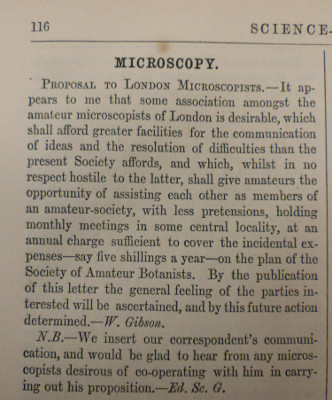
In May 1865 Science-Gossip published a letter from W. Gibson, a member of the Society for Amateur Botanists, calling for ‘some association among the amateur microscopists of London’. On July 7th a general meeting was called for the organisation of such a club, and it was decided that it should be called the Quekett Microscopical Club after the microscopist John Thomas Quekett, who had died in 1861. The Club was established to ‘give amateurs the opportunity of assisting each other’ and it was to hold monthly meetings and to have an annual charge to cover expenses.
Soon after its formation, members of the Club decided to keep a permanent record of its proceedings, and a Journal was produced. This contained papers read before the Club together with reports on discussions that arose from these, as well as notices of apparatus and objects exhibited before the Club and other matters of interest. Reports were also given of the Club’s Annual Soirées, such as that held at University College on March 13th 1868. The report stated that this was attended by approximately 900 ladies and gentlemen and that 107 microscopes were displayed by members of the Club alongside 98 instruments by 15 different makers.
The Quekett Club is still going today, dedicated to the interests of amateur microscopists, and it continues to hold monthly meetings and publishes its Journal.

